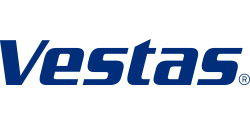|
|
Quick TakeMarkets climb as earnings and trade progress offset policy headwinds: Global equities posted modest gains in July, with the S&P 500 up 2.24%, the Nasdaq up 3.72% and the ASX 200 up 2.36%, as strong earnings, easing trade tensions and AI momentum outweighed rising bond yields and reduced hopes for near-term rate cuts. Central banks hold firm as inflation pressures linger: The Federal Reserve and European Central Bank left rates on hold, with both signalling a cautious approach. Hawkish messaging and mixed inflation data contributed to a reassessment of the policy outlook, while Australia’s RBA also paused but maintained an easing bias. Trade deals struck ahead of tariff deadline: New trade deals between the US and key partners, including the European Union and Mexico, reduced the risk of an abrupt return to broad-based tariffs. While some elevated tariffs remained in place, the agreements provided clarity and helped support investor sentiment globally. |
|
Snapshot

Global equity markets posted modest gains in July, with sentiment supported by improving trade clarity and a solid start to earnings season, even as expectations for near-term rate cuts diminished and geopolitical uncertainty persisted. Major indices moved higher overall, although momentum was somewhat restrained by hawkish central bank signals, a stronger US Dollar, and emerging concerns around the impact of newly implemented tariffs.

In the US, the S&P 500 rose 2.24% and the Nasdaq gained 3.72%, extending their respective winning streaks to three and four months, and reaching fresh record highs. Markets were buoyed by a strong earnings season, easing trade tensions, and continued AI momentum, even as bond yields rose and speculation grew that rate cuts may be delayed. Notably, the Federal Reserve held rates steady in July, but the tone of the meeting leaned hawkish, with no clear signal of near-term cuts and the first time since 1993 that any members of the committee voted against the majority decision. Meanwhile, a flurry of trade agreements in the final days of the tariff truce helped alleviate investor fears, particularly after a 90-day extension was granted to Mexico. Although tariff levels remain elevated, markets welcomed the reduced uncertainty and focused instead on the relative strength of the domestic economy and the potential for tariffs to have a narrow sectoral impact.

In Europe, the STOXX 600 rose 0.99% in July. The key development was the finalisation of a US–EU trade deal ahead of the 1 August deadline, which brought relief by averting an all-out trade war, even as it introduced new tariffs on a broad range of goods. While the agreement was welcomed for removing near-term risk, concerns remain about longer-term growth impacts, particularly for export-oriented sectors such as autos, pharmaceuticals, wine and spirits, and chemicals exposed to elevated US tariffs. The European Central Bank kept rates on hold, as expected, and signalled a willingness to wait for further economic signals before adjusting policy. Markets appeared to shift focus toward company earnings, with strong results from sectors such as banks and travel providing support, despite broader concerns around weakening demand and the impact of tariffs on industrial inputs and consumer goods.
Back in Australia, the ASX 200 rose 2.36% for its fourth consecutive monthly gain, reaching a fresh all-time high early in July before moving sideways into month-end. Optimism was supported by growing expectations of further interest rate cuts, particularly following softer-than-expected quarterly inflation data, which bolstered the case for RBA easing in August. The Reserve Bank held the official cash rate steady in July in a 6-3 split decision, signalling that an easing bias remains in place. Within the local economy, labour market strength and stabilising consumer demand helped offset weaker signals elsewhere.

Overall, July was characterised by cautious optimism tempered by evolving trade policy, tighter financial conditions and mixed macro data. While equities continued to edge higher, the backdrop remains evenly balanced, with investors focused on central banks, earnings, and the second-order effects of a shifting global trade regime.
Key Stocks

Generational Development Group
Cutcher & Neale Australian Shares Model
Formerly known as Austock Group, Generation Development Group (GDG) is an Australian financial services business. Originally operating as a pooled development fund providing capital to businesses, GDG is now structured across three key business lines within wealth management: bonds and annuities, financial research provider, and investment portfolio management.
GDG has expanded its footprint through strategic acquisitions (namely Lonsec and Evidentia), strengthening its competitive position in the high-growth managed accounts and research markets. The firm’s long-term outlook is supported by regulatory tailwinds, such as the increased demand for independent product research following the Royal Commission into Misconduct in the Banking, Superannuation and Financial Services Industry.
GDG is a new addition to the Australian Shares Model, providing the portfolio with a unique structural growth story in the Financials sector.

Vestas Wind Systems
Vestas Wind Systems is a Denmark-based global leader in wind energy solutions, specialising in the design, manufacture, installation and servicing of wind turbines. With presence in over 80 countries, Vestas maintains a strong presence in the renewable energy sector.
Vestas offers comprehensive expertise across the full lifecycle of a wind power plant, with the firm strategically positioned to benefit from the global momentum towards renewable energy adoption. Nippon Steel recently partnered with Vestas to supply steel for Vestas’ wind towers for European and Asian markets. The agreement was part of a broader push by Japan to strengthen the supply chain for wind generation.
Vestas Wind Systems contributes to the United Nations’ Sustainable Development Goals and is included in the Positive Impact Model. The holding performed strongly in July, delivering a return of 26.29%.

Generational Development Group
Cutcher & Neale Australian Shares Model
Formerly known as Austock Group, Generation Development Group (GDG) is an Australian financial services business. Originally operating as a pooled development fund providing capital to businesses, GDG is now structured across three key business lines within wealth management: bonds and annuities, financial research provider, and investment portfolio management.
GDG has expanded its footprint through strategic acquisitions (namely Lonsec and Evidentia), strengthening its competitive position in the high-growth managed accounts and research markets. The firm’s long-term outlook is supported by regulatory tailwinds, such as the increased demand for independent product research following the Royal Commission into Misconduct in the Banking, Superannuation and Financial Services Industry.
GDG is a new addition to the Australian Shares Model, providing the portfolio with a unique structural growth story in the Financials sector.

Vestas Wind Systems
Vestas Wind Systems is a Denmark-based global leader in wind energy solutions, specialising in the design, manufacture, installation and servicing of wind turbines. With presence in over 80 countries, Vestas maintains a strong presence in the renewable energy sector.
Vestas offers comprehensive expertise across the full lifecycle of a wind power plant, with the firm strategically positioned to benefit from the global momentum towards renewable energy adoption. Nippon Steel recently partnered with Vestas to supply steel for Vestas’ wind towers for European and Asian markets. The agreement was part of a broader push by Japan to strengthen the supply chain for wind generation.
Vestas Wind Systems contributes to the United Nations’ Sustainable Development Goals and is included in the Positive Impact Model. The holding performed strongly in July, delivering a return of 26.29%.
Ryan joined Cutcher & Neale as a Portfolio Manager in January 2023, with over 15 years' experience managing multi-asset investment portfolios, specialising in fundamental equity analysis. Ryan holds the Chartered Financial Analyst (CFA) designation and is Chairperson of the Cutcher & Neale Investment Committee, which oversees clients' Australian Share, International Share, Fixed Income and Cash exposures.
Start strong in January: Why smart tax planning begins well before June
AI Explainer: Who’s Behind the Tools You Keep Hearing About?
Ready for Next-Level Automation? See What’s New in Ostendo 243
Thinking ahead, acting today: Must-know succession strategies for practice owners
From locum shifts to running your own practice: When your cover needs an upgrade





